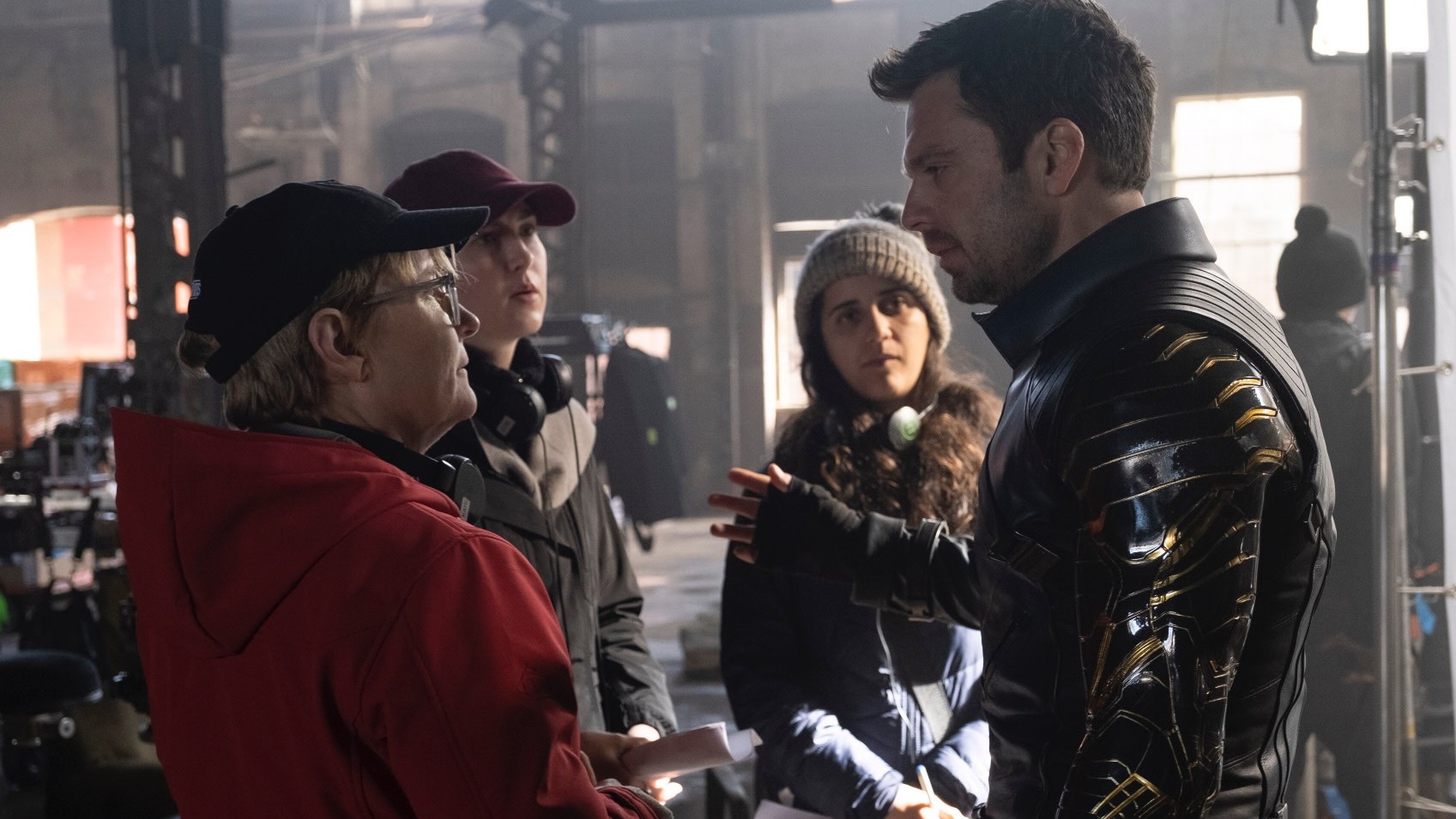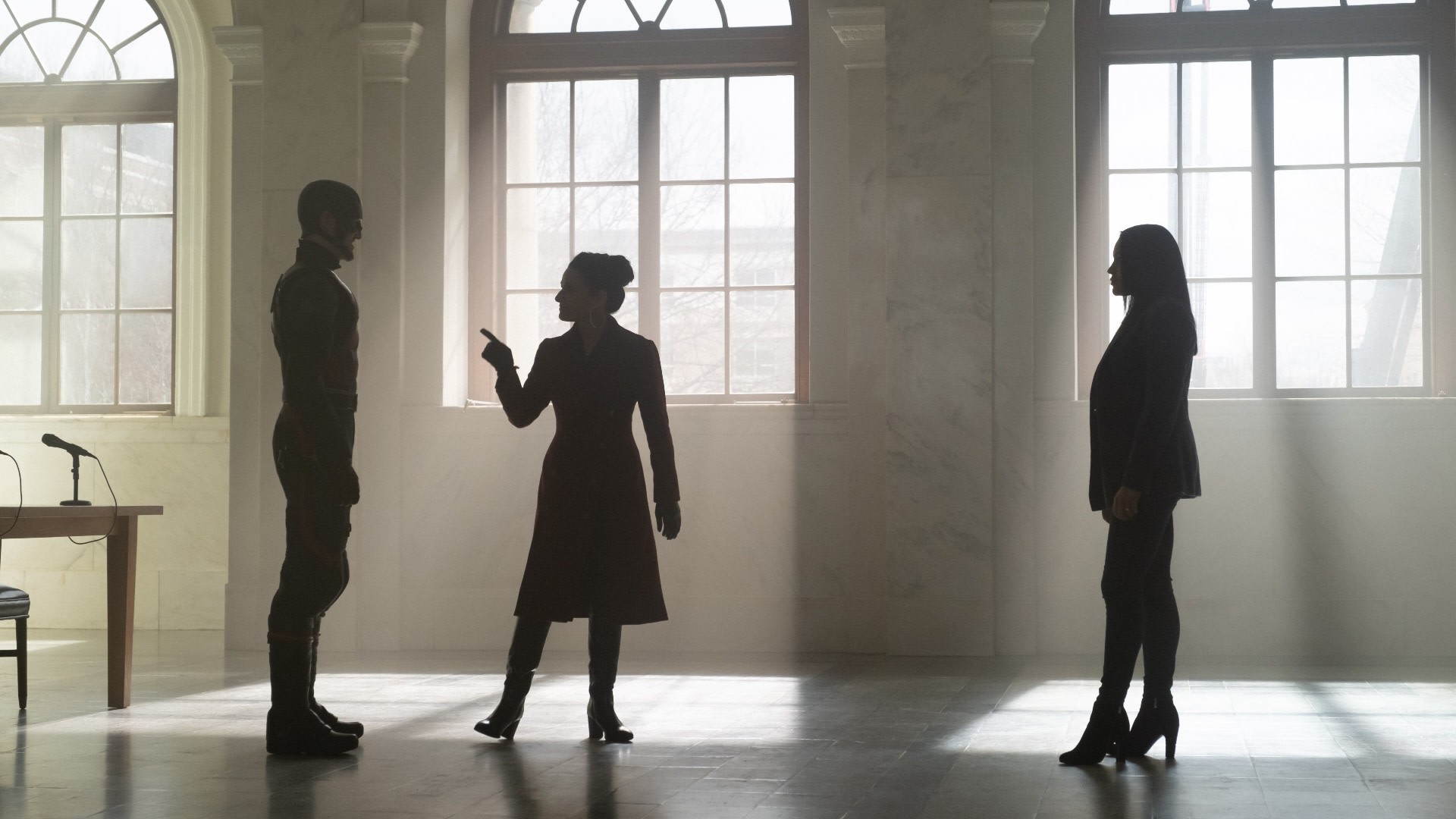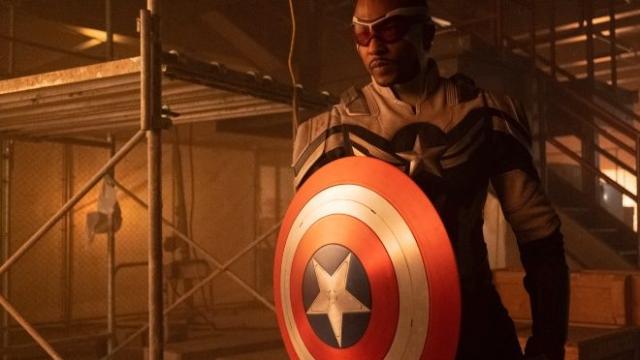The curse of working on a Marvel Studios project is you can’t talk about it for a long time. There’s joy to be had in the preparation, execution, and finally the completion, of course, but in the meantime, they’re so secretive it’s usually years from when you start on something to when you can finally talk about it. Finally, director Kari Skogland can talk about Disney+’s The Falcon and The Winter Soldier.
Skogland, a producer and sole director of every episode of the recent Disney+ show, hopped on a video call with Gizmodo earlier this week to answer some of our big questions of the season. How set was the ending? When did that title change take place? What were some challenges along the way and what is her view of John Walker? Read about all that and more below.

Germain Lussier, Gizmodo: How much of the ending of the show did you know going in, and how much of it kind of developed while you were writing and planning everything out?
Kari Skogland: Well, we shot the ending right at the beginning. I mean, in terms of the dock work, the party, and all that. That ending. That was shot like week two of shooting so that never really changed. In fact, the very end scene between Bucky and Sam when they’re just standing and kind of looking out the future, the classic walk off into the sunset scene, we shot that like week two. It was just a moment we were on the dock and it was a beautiful sunset and I just took the camera and because I didn’t really have an end scene in mind yet — one shot to wind it all up — I said “Let’s just try this and see if it works.” And so we did, we had a little extra time that day, and it never changed. It ended up staying because it worked so well. It had a lovely bonding quality to it.
But [Captain America’s] speech? That took a long time to craft and we shot that more toward the end of the shoot. By then, we really knew what that speech needed to be because we had gone through the journey of the shield and had moved things around a little bit in the show. So now we understood that speech. I think Malcolm [Spellman, head writer] had written a version of it, but we all knew that that was never going to be it. Then he and Anthony [Mackie] worked together to craft what ended up being the speech, which I think is brilliant.

Gizmodo: Was the show always going to get that retitle at the end? And then, sub-question to that, obviously it’s called “Captain America and the Winter Soldier” at the end but the show is also about Bucky’s journey away from the Winter Soldier. So was there a discussion about him getting a new title or why is he still “The Winter Soldier?”
Skogland: That decision, all the titling, came out of the post-production process because we hadn’t really decided how the titles were going to work. You don’t work into that at the beginning because we knew we had the Marvel flip, where we were going to put that, and then the end title sequence that was all designed through the post-production process, which I thought was a brilliant job. I think the decision to change the name and put it at the end came also through post-production, because once we decided on these front titles and then we went, “Oh, you know, it would be better if we’d finished it up and make that the period.” If the show was the sentence, this was the period to the sentence. But it was very much Sam’s moment. The Captain America moment. So Winter Soldier, I think that that’s still an open door, what happens to Bucky. He is transformed for sure, but he is perhaps still in the midst of that. So I felt that the one change was the most important.
Gizmodo: Throughout the show, Bucky and Sam always say that Steve is gone. Then there’s the moon stuff, which is kind of funny. But last we saw Steve, he was still alive. So was there ever any talk of explaining where Steve was or did that that divert too far off-centre?
Skogland: No, there was never any talk of explaining that. We just left him on the moon.

Gizmodo: [Laughs] There you go. So, the show had so much ground cover. There was Sam’s journey to Captain America, Bucky’s journey away from Winter Soldier, John Walker, Contessa, etc. What was the most challenging thing about pacing out, figuring out all the breaks and the structure of the show?
Skogland: Well, first thing, we approach it as a movie — a movie is a three-act structure, basically — so we approached it with that idea in mind, that it was a six-hour movie. Now, within that, we then broke down each episode knowing that a classic structure for an episode is sort of a five-act structure and so you kind of have to look at that, too. So it was quite a complicated storyline. I think Malcolm talks about “A movie is linear and this is a horizontal.” But we started with the linear. We blocked it out and then from that basic thing then we turn it on its side and said, “OK, this is this event.”
Then we started looking at the cliffhangers and how best to leave the audience going [gasps]. And that was more organic out of post, which is where you do that kind of thing, because what you write and what you imagine, hopefully, you get something better or more interesting through the process of being on set and how a scene ends up or how you juggle the cards later and such and such. So through that, you get to look at all six and slice and dice accordingly. Then we came up with different cliffhangers than we had originally written in many cases. Some stuck or we played with them. We had that same cliffhanger, but we maybe added a bit or took a bit away and so on. So it was a definitely a very organic process.
Gizmodo: Speaking of that process, was the Julia Louis-Dreyfus reveal always in that moment after John has lost everything?
Skogland: No, we played with that, as to where best to bring her in and we tried some different things, as you do. But then we decided that really waiting for that wonderful “Click, click, click” down down the hall was the best way to bring her in. So “The Boots Made for Walking” became our moment. But we did try other things and she just nailed the boots, which nailed her character. So everything else seemed to underserve that dramatic entrance.

Gizmodo: Now, speaking of John, obviously he has a huge arc in the show, too. He’s arguably the third lead. At first you hate them, then he gets worse, then he gets kind of redeemed at the end. Through your direction, how did you want the audience to feel about him at the end? Or did you purposely kind of leave that vague?
Skogland: Well, we left it a little vague on purpose but at the end of the day, I wanted people to like him. And I think everybody does like him. Now, they went through a period of not liking him at the beginning because he started out feeling like “Wait a second, is that the guy?” But then, through the calibration of performance as such, we realise he’s coming from a very earnest place. No matter what’s going on, he really does want to be a good Cap and he wants to do the right thing. Now, when his ego gets involved and the Dora Milaje take him down and he goes, “Oh, my God. I’m in over my head,” [that] sort of compels him into a conversation with Lemar and then we realise there’s a bead in there that’s missing. He’s actually a bit of an imposter.
He alludes to that. “Oh, yeah. that Medal of Honour, that was the worst day of my life.” And we realised, “Oh, something happened there that he’s not proud of.” So he’s actually got a bit of an imposter syndrome. And that makes you go, “Oh, he’s actually kind of damaged.” So you kind of like him a little bit, even though then he goes on to do something horrific, but you at least understand where it comes from. Then when [Contessa] sort of picks up the pieces after he’s been stripped of everything, I think you hope for him and that’s the most important thing — you just hope for him. And the big point is when he makes the decision to abandon vengeance. He’s got Karli and he’s got the GRC guys who are about to die. What does he do? He makes the right choice for the first time in a long time. And so that’s a bit redemptive.
All episodes of The Falcon and The Winter Soldier are now on Disney+.
